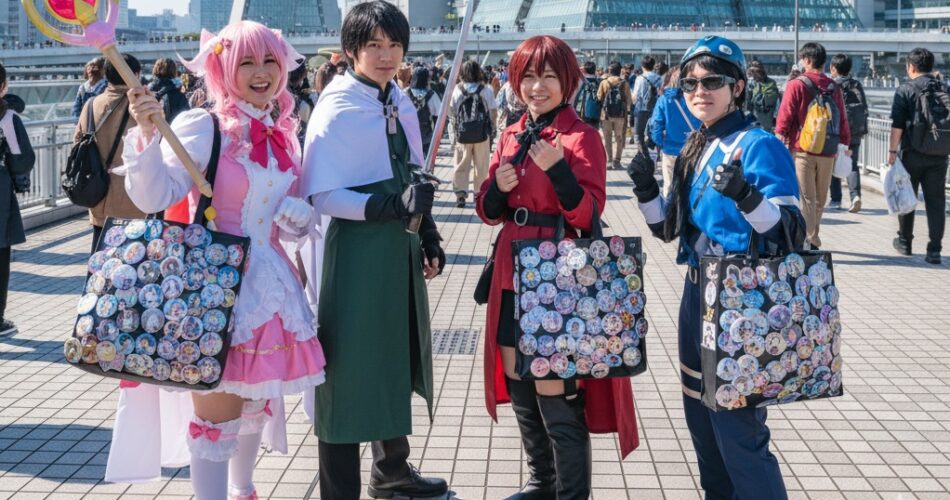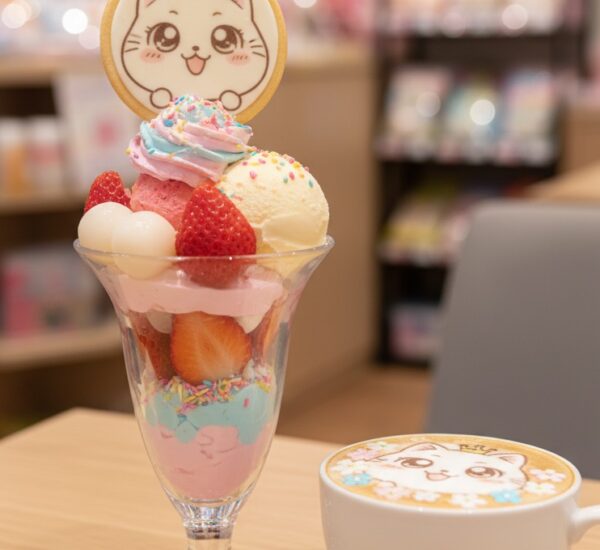“Otaku” (オタク) is a globally recognized Japanese word, but it carries a deep and complex history. Far more than just meaning “fan,” it describes a lifestyle of passionate, consuming interest. This culture, once stigmatized, is now a driving force behind Japanese pop culture, influencing media, technology, and the global spread of “Cool Japan.” Understanding the otaku is key to understanding the mechanisms of modern fandom and content creation in Japan.
This guide explores the multifaceted world of the otaku. We will cover the word’s origins, its evolution, the different “genres” of otaku, and the key locations, events, and language that define this passionate community. This guide will help you understand what it truly means to be an otaku, from its social implications to its massive economic impact.
What Does “Otaku” (オタク) Actually Mean?
The word “otaku” (オタク) originates from the formal pronoun “otaku” (お宅), meaning “your honorable home.” In the 1980s, socially awkward fans used this overly formal term to address each other. Columnist Akio Nakamori famously used it in a 1983 article to mock this group, cementing “otaku” as a derogatory label.
For decades, the word carried a heavy negative label, linked to reclusive and obsessive behavior. However, while that stigma still exists, many fans in Japan and worldwide have since reclaimed “otaku” as a positive identity. Today, it signifies a deep, expert-level knowledge in a subject, far beyond that of a casual fan.
— Stating One’s Passion —
私はアニメオタクです。
わたしはあにめおたくです。
Watashi wa anime otaku desu.
I am an anime otaku (a passionate anime fan).
私 (わたし, watashi) = I
は (wa) = Topic marker
アニメ (anime) = Anime
オタク (otaku) = Otaku / Passionate fan
です (desu) = Is / Am
— The Original Formal Meaning —
オタクはどちらですか。
おたくはどちらですか。
Otaku wa dochira desu ka?
Where is your (honorable) home?
お宅 (オタク, otaku) = Your home (polite)
は (wa) = Topic marker
どちら (dochira) = Where (polite)
ですか (desu ka) = (Makes it a question)
— Essential Vocabulary —
オタク (Otaku) – A person with a consuming, passionate interest
趣味 (しゅみ, Shumi) – Hobby (a more casual term)
専門的 (せんもんてき, Senmon-teki) – Specialized / Technical
熱心 (ねっしん, Nesshin) – Enthusiastic / Zealous
否定的 (ひていてき, Hitei-teki) – Negative (as in, a negative image)
肯定的 (こうていてき, Kōtei-teki) – Positive (as in, a positive image)
The Evolution of the Otaku: A Brief History
The history of otaku culture began in the 1970s. The 1980s, subsequently, became a “golden age” with hits like *Mobile Suit Gundam* and the formation of Studio Gainax by otaku creators, who proved fans could become professionals.
However, this boom was shattered in 1989 by the “Miyazaki Tsutomu Jiken” (宮崎勤事件), or the “Otaku Murderer” case. This horrific event linked “otaku” with crime in the public mind. As a result, the public image of otaku became dark and perverted, leading to widespread discrimination.
The 1990s’ *Neon Genesis Evangelion* began a slow cultural re-evaluation, but the true turning point was 2004’s Densha Otoko (電車男), or “Train Man.” This story improved the otaku image by portraying them as “pure” and earnest, if shy. Ultimately, this narrative, combined with the “Cool Japan” initiative, helped transition “otaku” from a label of shame to a vital cultural identity.
— Talking About the Image Change —
昔、オタクのイメージはとても悪かったです。
むかし、おたくのいめーじはとてもわるかったです。
Mukashi, otaku no imēji wa totemo warukatta desu.
In the past, the image of “otaku” was very bad.
昔 (むかし, mukashi) = In the past / Long ago
イメージ (imēji) = Image
は (wa) = Topic marker
とても (totemo) = Very
悪かったです (わるかったです, warukatta desu) = Was bad (polite past tense)
— Essential History Vocabulary —
歴史 (れきし, Rekishi) – History
黄金時代 (おうごんじだい, Ōgon Jidai) – Golden Age
事件 (じけん, Jiken) – Incident / Case (e.g., a crime)
差別 (さべつ, Sabetsu) – Discrimination
電車男 (でんしゃおとこ, Densha Otoko) – Train Man (the series)
The “Otaku” (オタク) Spectrum: Not Just Anime
A common misunderstanding is that “otaku” only refers to fans of anime and manga. In reality, it describes a deep field of interest. The most famous genres are the “Anime Otaku” (アニメオタク), “Manga Otaku” (漫画オタク), and “Gēmu Otaku” (ゲームオタク). Furthermore, a large and visible group is the “Aidoru Otaku” (アイドルオタク), or “Wota” (ヲタ), who are devoted to idols.
The spectrum is vast and diverse. “Tetsu-Ota” (鉄オタ) are train enthusiasts with deep knowledge of railways (鉄道, tetsudō). “Rekijo” (歴女) are “history women” passionate about Japanese history, especially the Sengoku period. Finally, “Seiyū Otaku” (声優オタク) are dedicated fans of “seiyū” (声優), or “voice actors,” following their careers and attending live readings.
— Identifying an Otaku Type —
私の友達は鉄オタです。
わたしのともだちはてつおたです。
Watashi no tomodachi wa Tetsu-Ota desu.
My friend is a train otaku.
私 (わたし, watashi) = My
友達 (ともだち, tomodachi) = Friend
は (wa) = Topic marker
鉄オタ (てつおた, Tetsu-Ota) = Train otaku (from 鉄道, tetsudō)
です (desu) = Is
— Essential Spectrum Vocabulary —
アニメオタク (Anime Otaku) – Anime fan
ゲームオタク (Gēmu Otaku) – Game fan
アイドルオタク (Aidoru Otaku) / ヲタ (Wota) – Idol fan
握手会 (あくしゅかい, Akushukai) – Handshake event (for idols)
鉄オタ (てつおた, Tetsu-Ota) – Train fan
歴女 (れきじょ, Rekijo) – “History woman” (female history fan)
声優 (せいゆう, Seiyū) – Voice Actor
The Sanctuaries: Akihabara (アキハバラ) and Otome Road (乙女ロード)
Otaku culture has its own “seichi” (聖地), or “holy lands.” The primary mecca is Akihabara (アキハバラ), often shortened to “Akiba” (アキバ). This Tokyo district was once “Denki-gai” (電気街), or “Electric Town,” famous for electronics. Over time, as fan interests shifted to games and anime, the shops changed to match.
Today, Akiba is a monument to otaku culture, filled with Animate stores, figure shops, Mandarake (まんだらけ) buildings for “dōjinshi” (同人誌), and “meidokafē” (メイドカフェ), or “maid cafés.”
However, Akiba traditionally catered more to a male audience. In response, a different sanctuary emerged: “Otome Road” (乙女ロード), or “Maiden Road,” in Ikebukuro (池袋). This is the mecca for female otaku, especially “fujoshi” (腐女子), or fans of “Boys’ Love.” The area is packed with dōjinshi stores and “shitsuji kafe” (執事カフェ), or “butler cafés.”
— Talking About Akihabara —
秋葉原にアニメのグッズを買いに行きます。
あきはばらにあにめのぐっずをかいにいきます。
Akihabara ni anime no guzzu o kai ni ikimasu.
I am going to Akihabara to buy anime merchandise.
秋葉原 (あきはばら, Akihabara) = Akihabara
に (ni) = to (destination particle)
アニメ (anime) = Anime
の (no) = ‘s (of)
グッズ (guzzu) = Merchandise (“goods”)
を (o) = Object marker
買いに行きます (かいにいきます, kai ni ikimasu) = To go to buy
— Talking About Otome Road —
乙女ロードは腐女子の聖地です。
おとめろーどはふじょしのせいちです。
Otome Rōdo wa fujoshi no seichi desu.
Otome Road is the “holy land” for fujoshi.
乙女ロード (おとめろーど, Otome Rōdo) = Otome Road
は (wa) = Topic marker
腐女子 (ふじょし, Fujoshi) = “Rotten woman” (fan of Boys’ Love)
の (no) = ‘s (of)
聖地 (せいち, Seichi) = Holy Land / Mecca
です (desu) = Is
— Essential Sanctuary Vocabulary —
聖地 (せいち, Seichi) – Holy Land / Mecca
秋葉原 (あきはばら, Akihabara) / アキバ (Akiba) – Akihabara
乙女ロード (おとめろーど, Otome Rōdo) – Otome Road
電気街 (でんきがい, Denki-gai) – Electric Town
メイドカフェ (Meido Kafe) – Maid Café
執事カフェ (しつじカフェ, Shitsuji Kafe) – Butler Café
The “Oshi” (推し) & The “Moe” (萌え) Economy
Modern otaku culture is defined by the economy of passion. At its center is the “oshi” (推し). This term comes from the verb “osu” (推す), meaning “to push.” Therefore, your “oshi” is your favorite character, idol, or actor—the one you support.
This support is shown through “oshikatsu” (推し活), or “oshi activities.” This involves buying “guzzu” (グッズ), or “merchandise”—like “akusuta” (アクスタ)**, acrylic stands—and attending live concerts. This consumption is fueled by emotions, most notably “moe” (萌え), which is a deep, protective affection. When an oshi does something perfect, fans describe the overwhelming feeling as “tōtoi” (尊い), or “precious/sublime.”
— Declaring Your “Oshi” —
私の一番の推しはこのキャラです。
わたしのいちばんのおしはこのきゃらです。
Watashi no ichiban no oshi wa kono kyara desu.
My number one favorite (“oshi”) is this character.
私 (わたし, watashi) = My
一番 (いちばん, ichiban) = Number one / Favorite
の (no) = ‘s (of)
推し (おし, Oshi) = The one you support / Favorite
は (wa) = Topic marker
この (kono) = This
キャラ (kyara) = Character
— Describing the “Tōtoi” Feeling —
今日のライブ、推しが尊いすぎた。
きょうのらいぶ、おしがとうといすぎた。
Kyō no raibu, oshi ga tōtoisugita.
At today’s concert, my “oshi” was too precious/sublime.
今日 (きょう, kyō) = Today
の (no) = ‘s (of)
ライブ (raibu) = Live (concert)
推し (おし, oshi) = Favorite
が (ga) = Subject marker
尊い (とうとい, tōtoi) = Precious / Sublime
すぎた (sugita) = Too much (past tense of すぎる, sugiru)
— Essential Fan Economy Vocabulary —
推し (おし, Oshi) – One’s favorite (the one you support)
推し活 (おしかつ, Oshikatsu) – “Oshi activities” (supporting your oshi)
グッズ (Guzzu) – Merchandise (“goods”)
アクスタ (Akusuta) – Acrylic Stand (from アクリルスタンド)
缶バッジ (かんばっじ, Kanbajji) – Tin badge / Button
萌え (もえ, Moe) – A strong, affectionate feeling for a character
尊い (とうとい, Tōtoi) – “Precious” / “Sublime” (a feeling of adoration)
Community & Creation: “Comiket” (コミケ) and “Dōjinshi” (同人誌)
Otaku are not just “consumers”; they are also “creators.” In fact, the community is built on “dōjinshi” (同人誌). This term refers to self-published works, like manga, novels, and artbooks. While some are original, many are “niji sōsaku” (二次創作), or “derivative works” (fan fiction/fan art), based on popular series.
The central event for this activity is “Comiket” (コミケ), short for “Comic Market” (コミックマーケット). Held twice a year at Tokyo Big Sight (東京ビッグサイト), its primary purpose is the sale of dōjinshi. Hundreds of thousands attend to support their favorite **”sākuru” (サークル), or “circle” (artist group), making it the ultimate festival of fan creativity.
— Talking About Comiket —
夏コミで同人誌を買うつもりです。
なつこみでどうじんしをかうつもりです。
NatsuKomi de dōjinshi o kau tsumori desu.
I plan to buy dōjinshi (fan comics) at Summer Comiket.
夏コミ (なつこみ, NatsuKomi) = Summer Comiket (Natsu = Summer)
で (de) = at (location particle)
同人誌 (どうじんし, Dōjinshi) = Self-published work / Fan comic
を (o) = Object marker
買う (かう, kau) = To buy
つもりです (tsumori desu) = I plan to…
— Essential Creation Vocabulary —
同人誌 (どうじんし, Dōjinshi) – Self-published work / Fan-made comic
コミケ (Komike) / コミックマーケット (Komikku Māketto) – Comic Market (Comiket)
サークル (Sākuru) – “Circle” (an artist or artist group selling at Comiket)
二次創作 (にじそうさく, Niji Sōsaku) – Derivative work (fan art / fan fiction)
東京ビッグサイト (とうきょうビッグサイト, Tokyo Biggu Saito) – Tokyo Big Sight (the convention center)
Essential Fan Language & Slang
Like any specialized community, otaku have their own slang and terminology. This shared language is essential for exchanging information and strengthening the community’s bonds.
— Using Fan Slang —
昨日のアニメ、神回だった!
きのうのあにめ、かみかいだった!
Kinō no anime, kamikai datta!
Yesterday’s anime episode was god-tier!
昨日 (きのう, kinō) = Yesterday
の (no) = ‘s (of)
アニメ (anime) = Anime
神回 (かみかい, kamikai) = “God episode” (a legendary episode)
だった (datta) = Was (casual)
— Essential Slang Vocabulary —
腐女子 (ふじょし, Fujoshi) – “Rotten woman”; a female fan of Boys’ Love (BL)
腐男子 (ふだんし, Fudanshi) – “Rotten man”; a male fan of Boys’ Love (BL)
イケメン (Ikemen) – A handsome man (a character type)
ツンデレ (Tsundere) – A character who is cold/hostile (tsun) but later warms up (dere)
ヤンデレ (Yandere) – A character who is sweet but “yanderu” (mentally ill/sick) and often violently possessive
沼 (ぬま, Numa) – “Swamp”; slang for falling hopelessly deep into a new fandom/hobby (“in the swamp”)
ネタバレ (Netabare) – A “spoiler”
フラグ (Furagu) – “Flag”; a plot sign, e.g., “shibō furagu” (死亡フラグ), a “death flag” (sign a character will die)
作画 (さくが, Sakuga) – Animation quality (e.g., “sakuga hōkai,” animation collapse/bad animation)
神回 (かみかい, Kamikai) – “God episode” (a legendary episode)
The Global Otaku: From “Japan-phile” to Mainstream
Otaku culture is now a global phenomenon. The spread began with **”fansabu” (ファンサブ)**, or “fansubbed,” VHS tapes. The internet accelerated this, and today, streaming services make new episodes available simultaneously worldwide.
This massive overseas fanbase has its own terminology, like “weeb,” which, much like “otaku,” has been reclaimed by many. This global passion fuels massive conventions, like Anime Expo in the US. Consequently, it has become a key driver of tourism and cultural understanding for Japan.
— Talking About Global Fandom —
日本のアニメは世界中で人気があります。
にほんのあにめはせかいじゅうでにんきがあります。
Nihon no anime wa sekaijū de ninki ga arimasu.
Japanese anime is popular all over the world.
日本 (にほん, Nihon) = Japan
の (no) = ‘s (of)
アニメ (anime) = Anime
は (wa) = Topic marker
世界中 (せかいじゅう, sekaijū) = All over the world
で (de) = In / at
人気があります (にんきがあります, ninki ga arimasu) = Is popular (“has popularity”)
— Essential Global Vocabulary —
世界的 (せかいてき, Sekaiteki) – Global / Worldwide
海外 (かいがい, Kaigai) – Overseas / Abroad
拡散 (かくさん, Kakusan) – Spread / Diffusion
ファンサブ (Fansabu) – Fansub (fan-made subtitles)
コンベンション (Konbenshon) – Convention
クールジャパン (Kūru Japan) – Cool Japan (initiative)
Read More:



